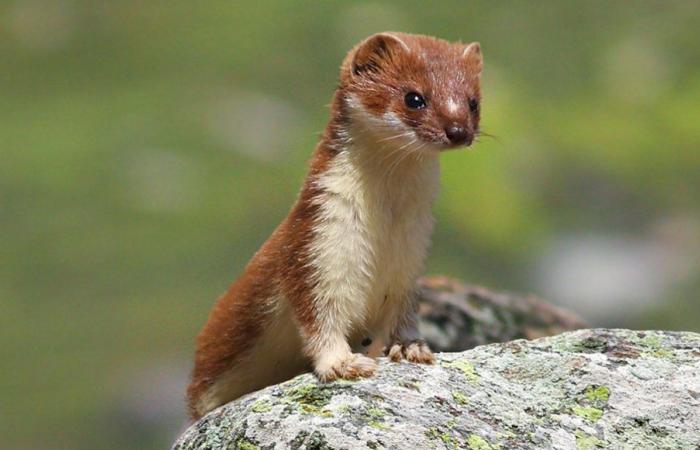It’s not talked about enough. It almost seems that not knowing protects us from the pain we would feel if we learned what lies behind the paint brushes. Soft, precise and elegant… but how many know that Kolinsky brushes are made with the tails of male Siberian weasels, found in the wonderful forests of Russia and northern China? It is no coincidence that the famous brushes take their name from the Russian name of this animal: kolinsky.
As poetic as it is to paint, unfortunately, using these brushes, there is nothing different from wearing a fur coat. On the contrary. And it’s all legal, under the sun, and indeed, well sponsored!
So why are so few consumers still aware of this trade?
A family with a young child has lunch at the restaurant and leaves, abandoning their dog there
by Noemi Penna
June 18, 2024
PETA reports “Some animals whose fur is used to make paintbrush are caught in the wild using steel-jawed traps and snares, and many of them freeze to death before the hunters return. Others are gassed in their dens or beaten to death with sticks. In some cases, as with wild boars, oxen, badgers, goats and horses, the fur may be cut or plucked while the animal is still alive.”
The real underlying problem is that often to deceive consumers, non-Kolinsky brushes (even make-up ones) are often unlabeled or incorrectly labeled. It is sometimes sold as “sable” hair but it doesn’t come from sables at all – it comes from mink or weasels and some of these animals are considered endangered. “Camel” hair can come from squirrels, goats or a combination of different animals. Ox hair is plucked from the ears, and “pony” hair can be taken from the back or mane of horses.
He finds his cat Tico again after 12 years: “This is how he recognized me”
by Noemi Penna
June 18, 2024
Another serious illegal paintbrush trade is mongoose poaching. For every kilogram of hair used to make brushes, 50 mongooses are killed. In 2019, the Government of India’s Wildlife Crime Control Bureau (WCCB) carried out “Operation Clean Art” with the aim of ending the trade in paintbrushes made from mongoose hair. “We are doing our best to disrupt the supply and production network, – said HV Girisha, deputy regional director WCCB – but unfortunately the awareness of this crime is low and as long as there is a demand, there will be people who will kill the mongooses for their fur”
Most dogs hate one of the most common displays of human affection. Do you know what it is?
by Noemi Penna
June 19, 2024
Although the mongoose is listed in Schedule II Part 2 of the Wildlife Protection Act and the sale and purchase of mongooses, their hair and meat have been prohibited in India since 1972, unfortunately illegal trafficking continues to flourish because brushes they are sold mainly in Europe, the Middle East and the United States and declared as made up of hair from other animals, the trade of which is unfortunately legal. But just because it’s legal doesn’t mean it’s ethical. Killing an animal with the sole purpose of using its fur to sell brushes is the most atrocious and anthropocentric thing there can be.
Bruno’s incredible transformation from aggressive to cuddly cat in just 21 days
by Noemi Penna
June 19, 2024
Francesco Rocca, director of the “La Torbiera” wildlife park, also tells LaZampa about the atrocity of this trade in Mustela sibirica (Siberian weasel). According to the conservationist, in fact there are more than one million skins of these animals marketed. A number that the wild species cannot afford and which at this rate will soon lead it to be threatened with extinction.
An endless atrocity, given that the consumption of the weasel does not only end with the use of the tail for brushes, but also to make the inside of the ladies’ fur coats, on the outside of which they are instead covered with ermine or hare.
The only way to counter this market and put an end to cruelty on weasels, mongooses, badgers, sables and all other animals killed for brushes, is to choose synthetic brushes such as Taklon fiber with valid labels and certifications that are truly cruelty free . According to PETA, “major art supply stores and websites like Colors of Nature offer a large selection of 100% synthetic brushes. Also Dick Blick Art Materials , Utrecht Art Supplies , Jerry’s Artarama and Rosemary & Co.”
Chai the cat goes out into the garden for the first time: his reaction is irrepressible
by Noemi Penna
June 19, 2024
Stevie the cat is blind and mute, but uses a special gesture to make himself understood
by Noemi Penna
June 19, 2024
v






